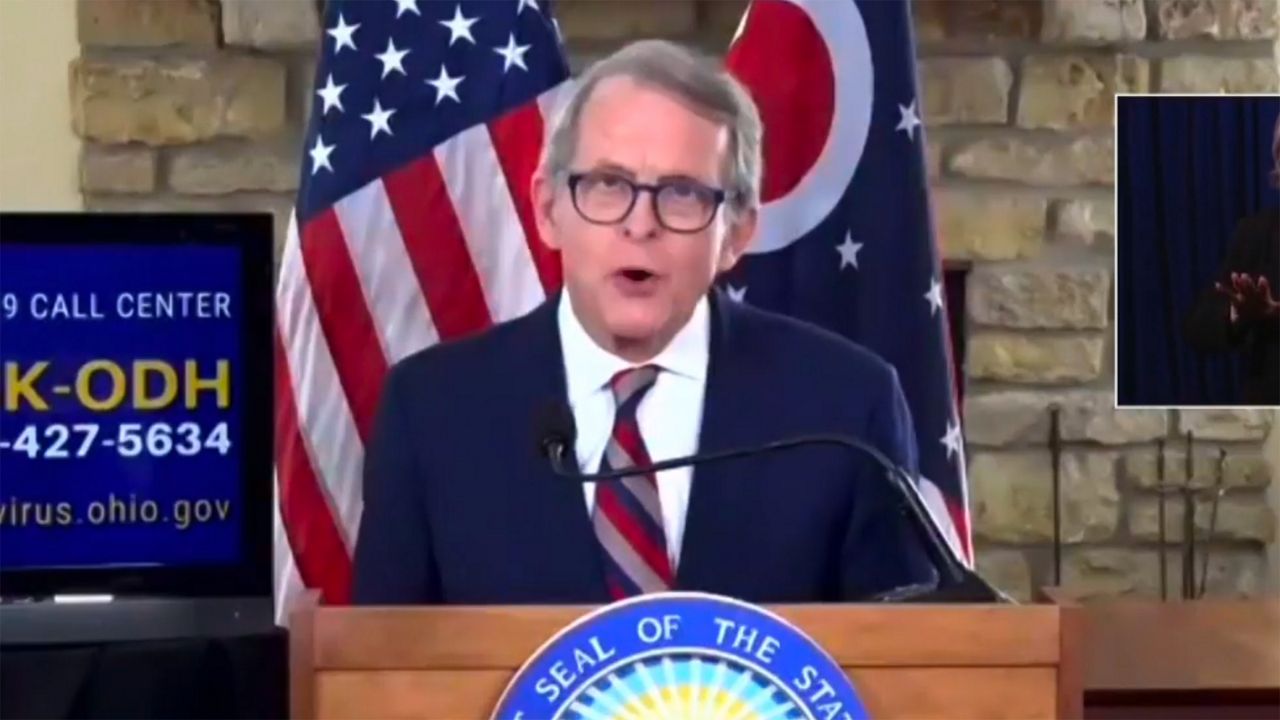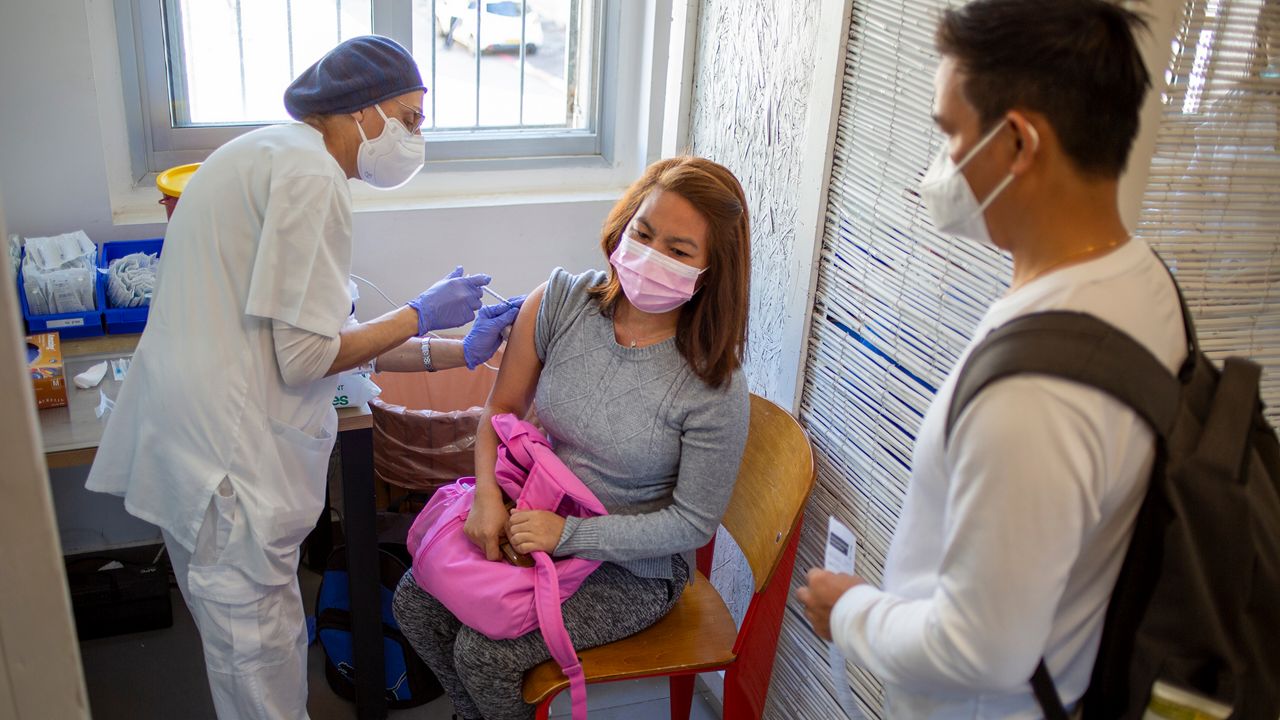COLUMBUS, Ohio — The state has identified 100 sites for mass vaccination in future stages of the immunization effort, Gov. Mike DeWine said during a news conference Tuesday. He also announced details on a new COVID-19 vaccine registration portal he hopes will be ready on Valentine’s Day.
The governor said Tuesday the state was just informed of its vaccine allocation arriving next week: 114,100 Moderna doses and 73,125 from Pfizer. DeWine says the Pfizer allocation could increase by 40% in the following weeks.
Teasing the state’s plans for mass vaccination, DeWine indicated Ohio will remain focused on age as eligibility is expanded. The state's next expansion will “certainly include a drop in age” and “may include some specific groups as well,” like categories of essential workers, the governor said.
Ohio is currently vaccinating seniors 65 and older, school teachers, and residents with medical conditions and developmental disabilities. On Monday, DeWine said the state will expand eligibility to an additional 200,000 people with conditions like Down Syndrome. After that, the state will refrain from any further eligibility expansions for a period of several weeks.
The state’s new vaccine registration portal will allow residents to check vaccine availability at all participating pharmacies in their county and register through a single system. Hospitals will not be linking their registration into the portal, the governor said, but the state’s website will redirect to hospitals’ registration portals.
“You’ll put your zip code in, or you put your county in, and it will direct you to anybody who has signed up to be part of the system,” DeWine said.
Ohio has identified 100 vaccination sites, the governor said, responding to an inquiry regarding the NFL’s announcement it would offer all 32 football stadiums for mass vaccination. DeWine said the state has plans in place, but his team is not ready to deploy mass vaccination yet.
“We have always felt that we would have, at some point, 'mass vaccination,’ but when we start this off — where we are now — we wanted to make sure that this was in every county,” DeWine said. “We will have mass vaccination sites, and we will employ them because there certainly is a role for them.”

The governor explained Ohio uses a population-based formula to distribute the vaccine to local providers. The state didn’t want vulnerable residents to have to commute potentially long distances to football stadiums, he said. The formula is based 90% on population, while 10% is allocated for disadvantaged areas, he said.
On Thursday, DeWine said vaccine providers will be visiting affordable senior housing locations to administer vaccines.
The governor said he understands many residents have experienced frustrating processes to register for an appointment. He said the state needed to add eligible groups to keep the pace of administration efficient.
“Days matter, and, statistically, a certain percentage of people are going to end up with COVID if they don't get the vaccine. We want to get the vaccine out today rather than tomorrow, and tomorrow rather than four days from now, so keeping that tension in regard to that supply and demand is important,” he said.
Ohio reported 1,974 patients were hospitalized with COVID-19 Tuesday — the eighth consecutive day the state has been under 2,500 hospitalizations — meaning Ohio is on track its curfew to be lifted Thursday.
The state’s seven-day case average was 3,231, and hospitals reported 528 patients were in intensive care units and 340 were on ventilators.
DeWine said the state is able to lift the curfew due to the drop in hospitalizations, which he attributes to a “significant extent” to nursing home vaccinations, but he said the state isn’t out of the clear.
“Just as a caution, if these numbers start going back up, we may have to put the curfew back on. We're going to continue to monitor this. If you asked me what I worry about. I worry about the variant, I worry about this change that may be coming,” he said. “And so, we very well could be by March into a very, very difficult and very different situation in Ohio, and if that's true, we'll have to do we have to do to slow this down.”
DeWine said it feels good to finally be coming down from the fall surge, but he says he has learned never to underestimate COVID-19.
“There's a cycle to this virus, and it's not a cycle that I can fully explain. I'm not sure anybody can fully explain it,” he said.



